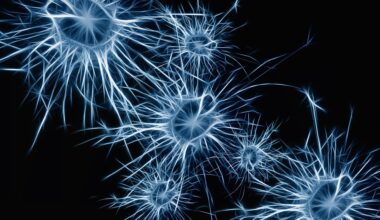New research from Dr. Yu Tian Wang’s lab has revealed a novel role for a protein involved in AMPA receptor trafficking, but that also is important for synaptic plasticity. The protein, p97, requires balance to facilitate synaptic transmission; out of balance it blocks long-term potentiation (LTP), a function that strengthens synaptic transmission and neuronal communication. These findings, published this week in the journal Nature Communications, offer a clarification of the role of the protein and its interaction with AMPA receptors, and resolve nearly a decade of disagreement between researchers in the field of molecular biology.
“Our research provides context for the role of p97, which we understand now is the molecular mechanism of synaptic plasticity,” explains Dr. Yuan Ge (pictured), who conducted the research in Dr. Wang’s lab as a PhD candidate. Now a postdoctoral fellow in Dr. Ann Marie Craig’s lab, Dr. Ge has been working on this research for nearly her entire time at the Djavad Mowafaghian Centre for Brain Health. “When we began this work, there was no good method to block p97 activity, since knockdown of p97 caused neuron death; the specific inhibitor of p97 had only recently been discovered. Now, we have a more complete picture of its purpose in the brain.”
Synaptic plasticity describes the function of synapses in the brain strengthening or receding with use. Over time, continued synaptic activity causes synapses to strengthen; decreases in synaptic activity cause synapses to weaken and deteriorate. Changes in synaptic strength allow the brain to process and respond to new information, or to prune those synapses no longer in use. Another word commonly used for synaptic plasticity is neuroplasticity.
P97 binds with AMPA (α-amino-3-hydroxy-5-methyl-4-isoxazolepropionic acid) receptors in the brain to enable growth of neurons and to strengthen synaptic connections. AMPA receptors mediate communication between the brain and central nervous system. Dr. Ge and colleagues found that out of balance—both when it is inhibited and when it is overexpressed—p97 blocks LTP, halting neuronal communication. In neurodegenerative disorders such as Alzheimer’s disease, or after stroke, it may contribute topathological synaptic changes, which in neurobiology represents a reduction of neuronal communication, weakening synapses and leading to cell death.
“P97 exists throughout the body, performing a variety of cellular functions,” explained Dr. Ge. “Until now, it has not been clear how p97 functions in neurons. We now see that p97 specifically interacts with and promotes the formation AMPA receptors and plays a critical role in mediating synaptic plasticity.”
While Dr. Ge is in the final stages of her postdoctoral work, she looks forward to seeing this research continue in Dr. Wang’s lab.
“I have developed a peptide to block p97, so now my colleagues are looking at its function in mouse models to determine whether it can serve as a therapeutic target for stroke recovery or in repairing neurodegeneration,” said Dr. Ge. “Our experiments are ongoing.”


